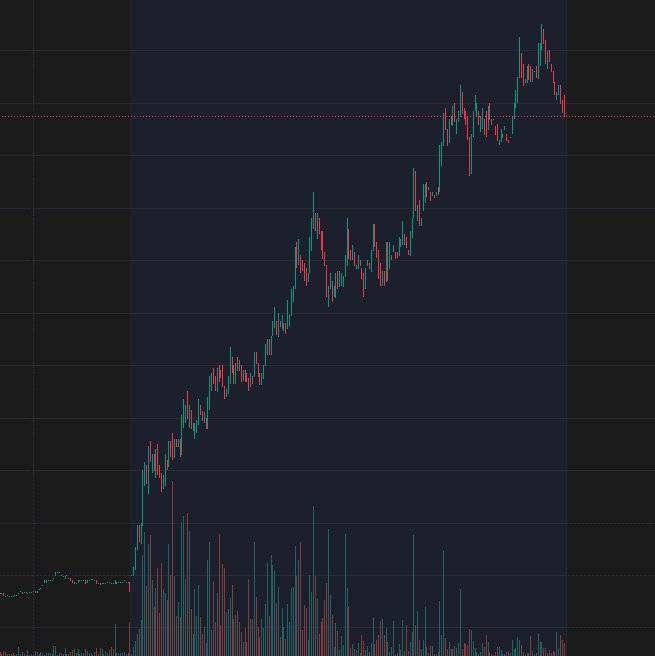Breakouts can be some of the most profitable trading opportunities—when they work. But many traders fall into the trap of chasing breakouts that fail, leading to frustrating losses. The key to success? Volume.
A true breakout needs strong buying or selling pressure behind it. Otherwise, it risks becoming a fake breakout that traps traders before reversing. Understanding how to spot high-volume breakouts can dramatically improve your success rate and help you avoid getting caught in false moves.
In this guide, we’ll cover:
- What a high-volume breakout is
- Why volume matters
- How to spot real vs. fake breakouts
- Entry and exit strategies
- Common mistakes to avoid
What Is a High-Volume Breakout?
A breakout occurs when the price moves beyond a key support or resistance level. But for the breakout to be valid, it needs strong volume backing the move.
Here’s why volume is important:
- High volume confirms conviction. When many traders are buying into a breakout, it increases the likelihood that the move will sustain.
- Low-volume breakouts are weak. If price moves past a key level but volume remains low, it often means the move lacks real demand.
- Volume spikes signal institutional interest. When big players enter the market, volume surges. Following institutional money can help traders avoid getting caught in false moves.
How to Spot Real vs. Fake Breakouts
Not all breakouts are created equal. Here’s how to differentiate between real and fake moves:
1. Volume Surge on the Breakout
A breakout with a spike in volume is more likely to hold. If the volume is below average, be cautious—it may be a false move.
2. Price Closes Above Resistance (or Below Support)
A true breakout should close outside the key level. If price breaks above resistance but fails to close above it, that’s a warning sign of a possible reversal.
3. Retest of the Breakout Level
A strong breakout often retests the breakout level before continuing in the breakout direction. This confirms that former resistance has turned into new support (or vice versa).
4. Trend Alignment
Breakouts that align with the overall trend have a higher probability of success. A breakout against the prevailing trend is more likely to fail.
5. Confirmation from Indicators
Look for confirmation from indicators like the Relative Strength Index (RSI), MACD, or moving averages. If the breakout occurs with bullish divergence or strong momentum, it’s a good sign.
Entry and Exit Strategies for Breakout Trading
Once you identify a strong breakout, the next step is to plan your trade. Here are some effective entry and exit strategies:
1. Buying the Initial Breakout
The most aggressive strategy is entering as soon as price breaks a key level with strong volume. This method carries higher risk but offers the best reward if the breakout is strong.
2. Waiting for a Retest
A more conservative approach is waiting for price to retest the breakout level before entering. This reduces the risk of getting caught in a fake breakout.
3. Using Stop-Losses to Manage Risk
Always use a stop-loss to protect against reversals. Place it:
- Below the breakout level (for long trades)
- Above the breakout level (for short trades)
4. Setting Profit Targets
Profit targets can be set using:
- Previous resistance levels (for upward breakouts)
- Measured move projections (equal to the size of the previous range)
- Trailing stops to lock in profits as the move develops
Common Mistakes to Avoid
Even experienced traders fall into traps when trading breakouts. Here are some of the biggest mistakes to avoid:
1. Entering on Low Volume
Without strong volume, a breakout is more likely to fail. Always check the volume profile before entering a trade.
2. Chasing Extended Moves
Breakouts are strongest when they come after consolidation. If a stock has already made a large move before breaking out, it may be exhausted.
3. Ignoring the Market Context
A breakout in a weak overall market may struggle to sustain. Always consider the broader market conditions.
4. Placing Stop-Losses Too Tight
Setting stop-losses too close to the breakout level increases the risk of getting stopped out by short-term volatility.
Final Thoughts
High-volume breakouts can offer some of the most profitable trading opportunities, but only if you know how to spot real moves versus fakeouts.
By focusing on volume confirmation, waiting for retests, and avoiding common mistakes, you can significantly improve your success rate when trading breakouts.

Leave a Reply